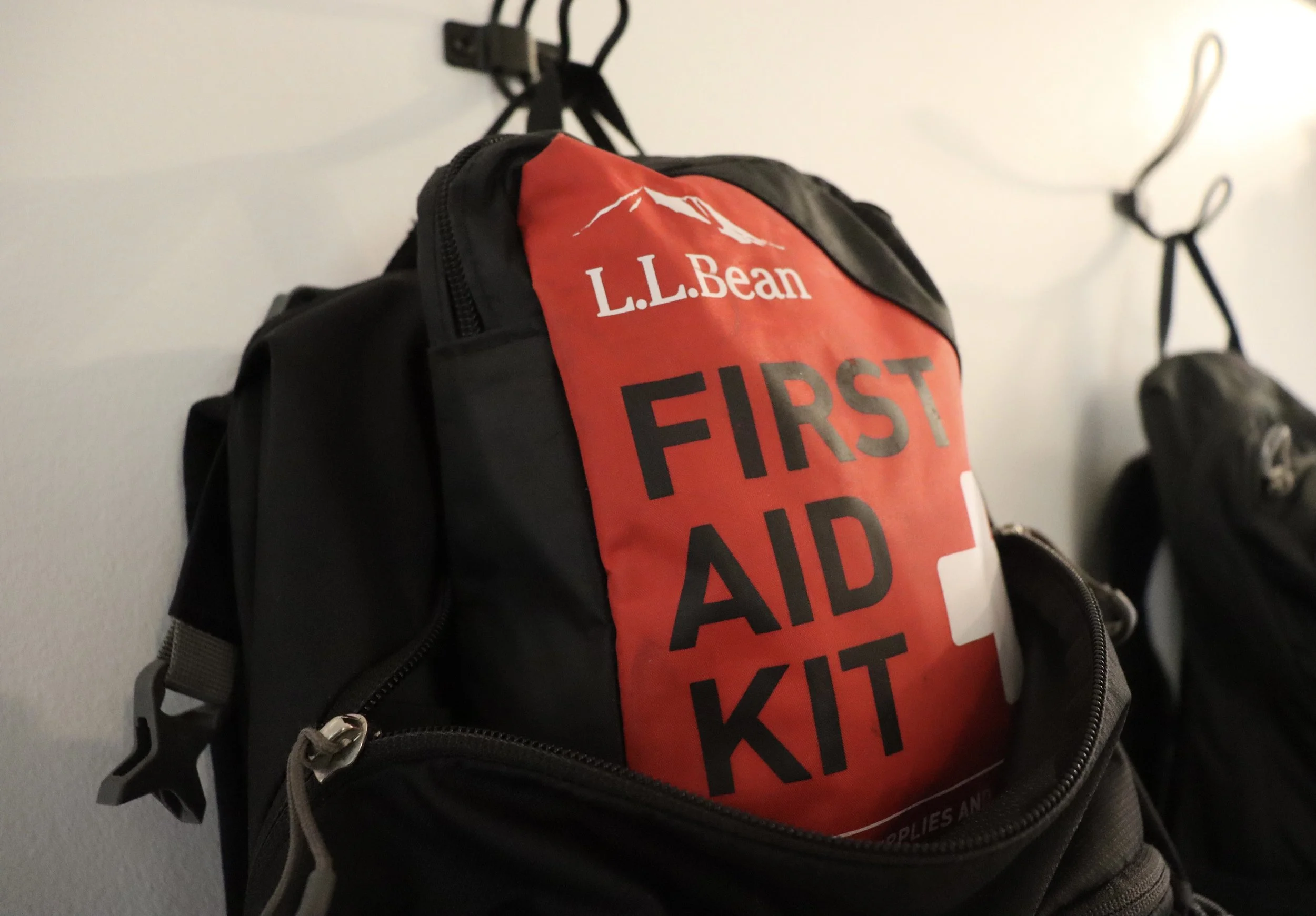Maine Backpacking Essentials
It’s crucial to plan ahead for any backpacking trip. Running out of food or water or getting lost in the woods can quickly become problematic and dangerous. Therefore, preparation is the most important part of the planning process. This post outlines five important aspects of the planning process: food, water filtration, gear, emergency supplies, and planning your route.
*Some of the links shared in this post may be affiliate links meaning I make a small commission off of your purchase with no extra cost to you. This allows me to continue to create free content for my readers. Thank you for your continued support!
Food
To help keep your pack as light as possible, opt for freeze-dried meals for breakfast and dinner. I gotta say, I was pleasantly surprised by how tasty they are. The texture isn’t always perfect, but the flavors are solid. Also— there are so many options to choose from! Even our friend that has a long list of allergies is able to find freeze-dried meals he could enjoy. My personal favorite freeze-dried meals are the fettuccine Alfredo and the beef stew entrees from Mountain House.
For lunch, I opt for protein-heavy bars and snacks like trail mix, granola bars, peanut butter, etc. This helps me conserve the amount of water I need to carry as well as the amount of time I need to stop for.
Water filtration
I always bring two methods of water filtration. The first is typically iodine tablets, which take about 30 minutes to sterilize your water. The second is the Sawyer Squeeze water filtration system, which requires filling up a large pouch with water and then squeeze it through a filter into a clean bottle or bladder. Or you can screw the filter onto a disposable water bottle and not spend the time squeezing the water into a bottle (which can be very time consuming). Personally, using iodine tablets is my preferred method of water filtration. I find it to be easier, less time consuming, and space-saving.
Gear
Besides food and water filtration, the next most important factor is hiking gear. I’ve found that this largely varies from person to person, so i’m just going to share what I find to be helpful and leave it at that.
First and foremost, overnight hiking packs. These vary in size, typically holding between 30-60 liters. My go-to for backpacking is my Osprey Eja 48 liter pack that I was fortunate enough to purchase on sale from L.L Bean. My favorite feature of Osprey packs is how well they sit off of your back to promote air ventilation.
Don’t forget to pack hiking poles. They are the true MVP of any backpacking trip. These Hikelite 4-season poles helped me stand upright so I could breathe better. They can be an absolute life saver, especially when it’s hot outside or raining. They also help relieve joint pain. This particular pair only weigh 1 pound 3 oz and can easily strap to your pack when not in use.
Both my husband and I’s hiking boots are Salomon brand and they’ve held up for years. These X Ultra Mid Gore-Tex boots are my go-to summer hiking boot. Honestly, you really can’t go wrong with any of their boots. In my experience, the Gore-Tex boots are lightweight, water resistant, breathable, and have great traction. They pair perfectly with these Darn Tough wool socks.
For sleeping on summer nights, I usually pack a two-person Microlight tent from L.L Bean, my inflatable pillow from Klymit, my Big Agnes insulated sleeping pad, and my 25 degree lightweight down sleeping bag from L.L Bean. If the weather is extremely cold, a bed pad with a higher R-value and a warmer sleeping bag may be necessary. I have never found that to be the case while backpacking anytime between June and September in Maine.
Emergency Supplies
Emergency supplies are arguably the most critical item in your backpack. I find that most people tend to underestimate how dangerous hiking is. Emergencies can happen to anyone at any time. You could fall, twist an ankle, get rained on and develop hypothermia, get attacked by a wild animal, etc. Making it crucial to have emergency supplies on hand.
I always pack my first aid kit, which holds medical and survival supplies for 2 people. I also bring emergency blankets, two forms of water filtration, compass, maps, a small multi-tool, headlamps, extra food, etc. It’s also important to pack items specific to the region you’re hiking. For example, rope to hang your food from a tree or sunscreen.
Planning Your route
To be safe, plan your hiking route out before you ascent on your journey. That way, you can provide an accurate hiking timeline to either a family member or friend in case you don’t contact them when you say you’re going to. Make sure you’re realistic in your expectations and listen to your body. If you don’t have a lot of backpacking experience or hiking experience, start with smaller mountains and work your way up to the larger overnight hikes. And always remember to bring two forms of navigation. A waterproof paper map really is the best way to go!
Overnight hiking can be both fun and safe if you know what to pack and plan ahead. Always make sure that you pack accordingly, tell people where you’re leaving and when you expect to be back, and most importantly, take hiking seriously. Respect the land, carry in and carry out, and don’t bite off more than you can chew. Hike happy, friends!







